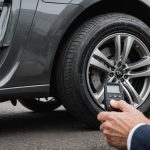Overview of Parking Sensors
Parking sensors have become an integral feature in modern vehicles, significantly enhancing driving safety and convenience. Particularly for British cars, these sensors contribute to a more seamless and enjoyable driving experience by aiding drivers in navigating tight spaces.
Parking sensors generally fall into a few categories, each offering distinct operational mechanisms. Ultrasonic sensors, for example, work by emitting sound waves that bounce back once they hit an obstacle. These are commonly installed in the bumpers of vehicles. Electromagnetic sensors, on the other hand, create an electromagnetic field around the vehicle, detecting nearby objects in real-time.
Topic to read : Mastering Adaptive Cruise Control: Programming Tips for Ultimate Safety in Your British Luxury Sedan
Installation Basics and Benefits
The installation and calibration of parking sensors are crucial to ensure they function optimally. When properly set up, these systems facilitate smooth parking and offer accurate alerts, reducing the risk of minor accidents. One of the key benefits of correct calibration is the accuracy of proximity alerts, which helps in avoiding hurdles effectively and safely. DIY installations might be tempting, but professional setup is often recommended to guarantee precision and reliability in performance.
Installation not only enhances the overall driving experience but also potentially increases the resale value of British cars.
This might interest you : Ultimate Guide to Waterproofing the Electrical System of Your British Off-Road Vehicle
Essential Tools for Installation
Gathering the right Installation Tools is crucial for a seamless setup of parking sensors. To start, you’ll need a high-quality DIY Kit, which often includes core necessities like the sensors themselves, a control box, and a digital display.
Calibration Gear is another vital component. Accurate alignment ensures the parking sensors function effectively, detecting obstacles at optimal distances. Make sure to have a reliable voltage tester on hand. This tool checks electrical connections, ensuring everything is wired safely and correctly before powering the system.
Additionally, it’s important to equip yourself with the right mounting gear. Secure brackets and screws specific to your vehicle’s make and model can greatly ease the installation process, helping you avoid any unnecessary damage.
For safety, never underestimate the importance of proper safety equipment. Eye protection, gloves, and a sturdy ladder are essential. Not only do they protect you while you work, but they also help maintain precision during sensitive tasks.
Finally, prepare all materials ahead of time. This includes cable ties, adhesive strips, and possibly an extra set of batteries for the sensors. With this comprehensive toolkit, you’ll be well-prepared for a successful parking sensor installation.
Step-by-Step Installation Process
Embarking on the installation process of parking sensors requires careful attention to each step to ensure optimal functionality. Below is a step-by-step guide to ease you through the journey.
Preparing the Vehicle
Begin by ensuring the vehicle is parked on a stable, level surface with the parking brake engaged. This foundational step stabilises the vehicle, providing a secure working environment. Next, gather all necessary tools and equipment, including the sensor kit, drill, measuring tape, and screwdrivers. Clean the bumper thoroughly to remove dirt and debris, as this may affect sensor functionality. It’s crucial to read the manufacturer’s manual for specific vehicle considerations during the sensor setup.
Mounting the Sensors
For precise sensor placement, measure and mark the ideal spots on the bumper following the manufacturer’s guidelines. Typically, sensors are positioned at equal intervals to cover all angles. Drill carefully into these marked locations, ensuring the holes are properly aligned for smooth sensor insertion. Insert each sensor snugly into its respective hole, making sure they are all securely fastened.
Wiring the System
Wiring is a critical component of the installation process. Connect the sensor wiring to the vehicle’s electrical system, usually through the reverse light circuit. This setup ensures sensors activate when the vehicle is in reverse. Follow the manufacturer’s wiring diagram meticulously to avoid potential errors. Secure any loose wires with zip ties to prevent entanglement or damage.
Calibration Techniques
To ensure optimal sensor performance, calibration is crucial. This process involves precise calibration methods that fine-tune and adjust sensors to maintain their accuracy and reliability over time. Without regular sensor adjustment, the data collected can be misleading, compromising the system’s effectiveness.
Step-by-Step Calibration Procedures
Begin with a thorough inspection of the sensor and its environment. Ensuring that the sensor is clean and properly installed is a key initial step. Then, execute a controlled test where known values are introduced to the sensor. Adjustments are made until the readings coincide with these known values, which is essential for achieving the desired level of accuracy. Document each adjustment meticulously to create a reference point for future calibration methods.
Tips for Verifying Sensor Accuracy Post-Installation
After completing the calibration, conducting accuracy checks is vital. Introduce standardized tests regularly to ensure sustained precision. Compare sensor readings with verified measurements and look for any discrepancies. If a sensor displays inconsistent results, re-calibration might be necessary. By routinely verifying sensor accuracy, potential issues can be identified early, ensuring consistent data integrity and system performance.
Troubleshooting Common Issues
Encountering sensor problems in your robotic vacuum can be frustrating, but understanding the root cause is the first step towards resolution. Let’s explore how to systematically address these concerns.
Identifying Sensor Malfunctions
Sensor problems often manifest when the robot struggles to navigate smoothly. Check for warning signals like erratic movement or inability to detect obstacles. Additionally, dust accumulation on sensors can obstruct functionality—a common culprit for common issues in robotic vacuums.
Solutions for Common Problems
To resolve these sensor-related common issues, follow a systematic approach. First, ensure the sensors are free from any debris by using a soft cloth to clean them gently. Reboot your device to reset its systems; this can often rectify minor software glitches causing sensor problems. Maintain a regular cleaning schedule to mitigate future occurrences.
When to Seek Professional Help
Sometimes, despite your best efforts, sensors may still malfunction. Persistent sensor errors, despite following troubleshooting steps, signify it’s time to consult a technician. Specific common issues, such as complex internal malfunctions or damage, require expert attention. Prioritise professional intervention to avoid escalating the problem or voiding warranties. Debugging these sophisticated electronic systems ensures optimal device performance and longevity.
Safety Precautions During Installation
When installing vehicle components, prioritising Installation Safety is crucial to avoid mishaps. Begin by ensuring you have a well-ventilated area. This helps in preventing inhalation of harmful fumes and maintaining a clear working environment. Here are some key safety measures to keep in mind:
- Eye and hand protection: Always wear safety glasses and gloves to protect against debris and sharp edges.
- Working surface: Ensure the vehicle is on a stable, flat surface to prevent accidental movement. Consider using wheel chocks for added Vehicle Safety.
- Positioning: Do not crawl under a vehicle unless it’s securely elevated with jack stands, never rely solely on a jack.
Regarding electrical aspects, follow these Electrical safety tips:
- Always disconnect the battery before handling any wiring to avoid electric shocks or short circuits.
- Use insulated tools when dealing with vehicle wiring.
- Double-check connections for accuracy and security to prevent future malfunctions.
With these safety precautions in mind, maintain an attentive approach throughout the installation process. This not only ensures personal safety but also the integrity and function of the installed components.
Frequently Asked Questions
When it comes to installing parking sensors, certain FAQs often arise. Let’s address these prevalent concerns to provide clarity and assistance.
How are parking sensors installed? Installation involves mounting the sensors on the bumper of your vehicle and wiring them to the car’s electrical system. This can typically be achieved by carefully following the manufacturer’s instructions or seeking professional help for a seamless result.
Do parking sensors require regular maintenance? Yes, routine checks are beneficial to ensure optimal performance. This includes keeping the sensors clean from dirt or obstructions that may affect their functionality.
What common problems could affect sensor functionality, and how can they be addressed? Occasionally, sensors may malfunction due to dirt accumulation or wiring issues. If you encounter sensitivity errors or false readings, cleaning the sensors or consulting with a technician might solve the problem.
To summarise, installing and maintaining parking sensors can significantly enhance your driving experience. Proper attention and care can easily mitigate common issues, and knowing the answers to these FAQs helps in ensuring your sensors function efficiently.











